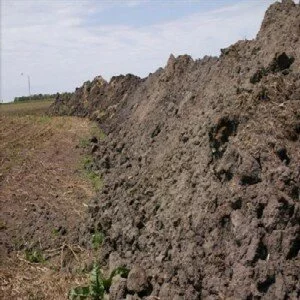A group of leading soil scientists, including the University of Delaware’s Donald L. Sparks, has summarized the precarious state of the world’s soil resources and the possible ramifications for human security in a paper published Thursday, May 7, in the journal Science.
In a review of recent scientific literature, the article, titled “Soil and Human Security in the 21st Century,” outlines threats to soil productivity — and, in turn, food production — due to soil erosion, nutrient exhaustion, urbanization and climate change.
“Soil is our planet’s epidermis,” said Sparks, echoing the opening line of the article. “It’s only about a meter thick, on average, but it plays an absolutely crucial life-support role that we often take for granted.”
Sparks, who is the S. Hallock du Pont Chair in Soil and Environmental Chemistry in the Department of Plant and Soil Sciences at UD, has been chair of the National Academy of Sciences’ U.S. National Committee for Soil Sciences since 2013.
He and his five co-authors, who are also members of the national committee or leaders of soil science societies, wrote the paper to call attention to the need to better manage Earth’s soils during 2015, the International Year of Soils as declared by the United Nations General Assembly.
“Historically, humans have been disturbing the soil since the advent of agriculture approximately 10,000 years ago,” Sparks said. “We have now reached the point where about 40 percent of Earth’s terrestrial surface is used for agricultural purposes. Another large and rapidly expanding portion is urbanized. We’re already using the most productive land, and the remainder is likely to be much less useful in feeding our growing population.”
As the population of the planet grows toward a projected 11 billion people by 2100, the key to producing enough food will be to find better ways to manage the agricultural lands we already have, Sparks says, rather than expanding into new areas. However, this will mean overcoming some rather daunting challenges.
According to the Sparks and his colleagues, soil erosion greatly exceeds the rate of soil production in many agricultural areas. For example, in the central United States, long considered to be the “bread basket” of the nation, soil is currently eroding at a rate at least 10 times greater than the natural background rate of soil production.
The loss of soil to erosion also involves the loss of key nutrients for plant growth, leading to the need for commercial fertilizers. However, the current rate of fertilizer production is unsustainable, according to Sparks.




No Comments